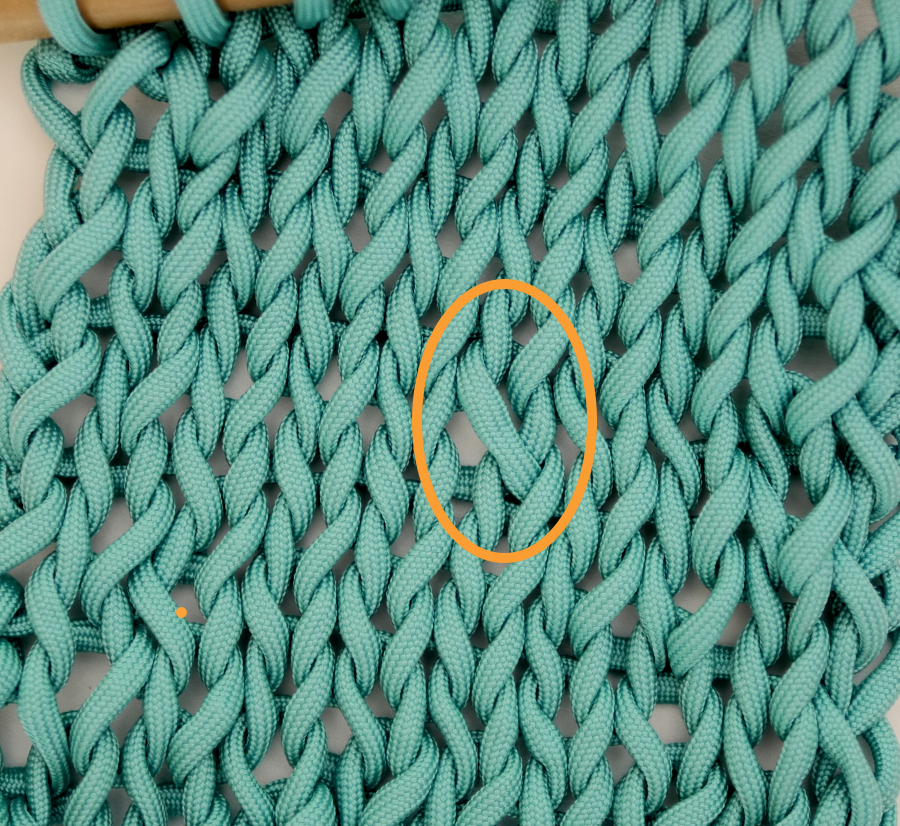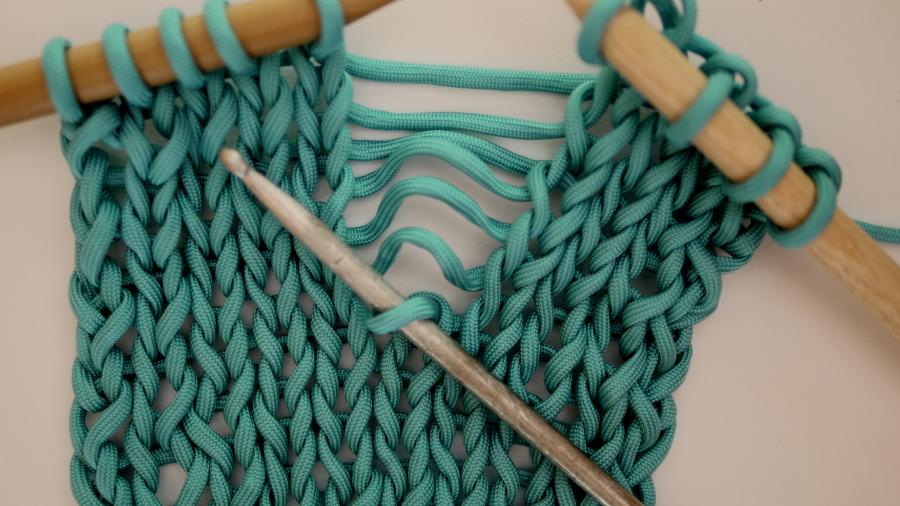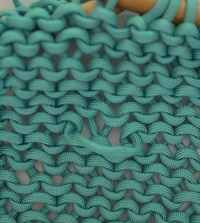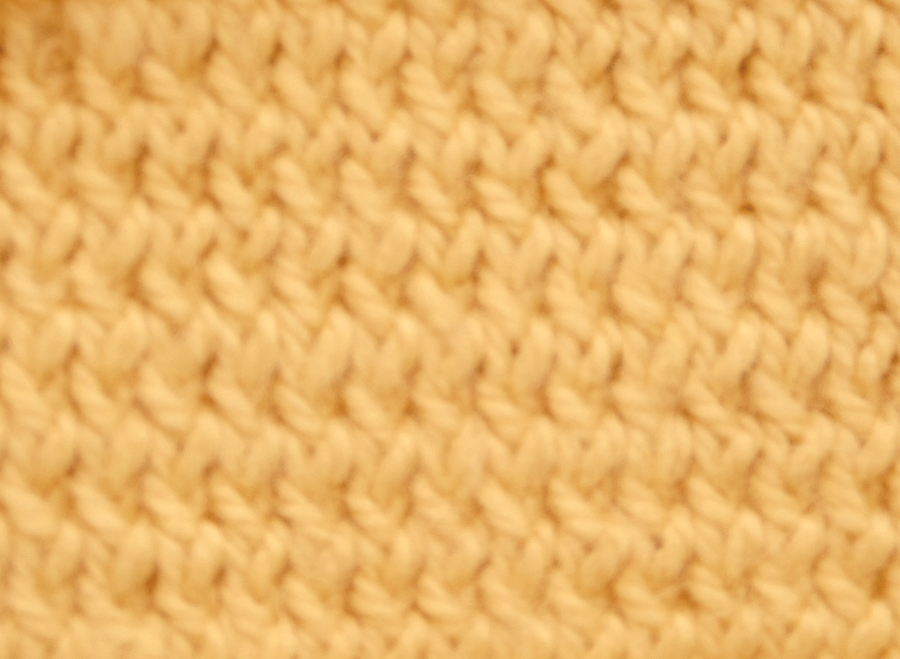A twisted stitch is simply a stitch that has its legs crossed.
 A twisted stitch is simply a stitch that has its legs crossed. This happens when a knitter works in the wrong leg of a stitch. This is a frequent mistake beginners make when they hang a dropped stitch with the wrong leg on top and then work normally.
A twisted stitch is simply a stitch that has its legs crossed. This happens when a knitter works in the wrong leg of a stitch. This is a frequent mistake beginners make when they hang a dropped stitch with the wrong leg on top and then work normally.Fixing a twisted stitch is simple. If you see the wrong leg on top of the needle, turn the stitch before you knit it. If you are more secure in your knitting skills, then just work the stitch wrong by working in the back leg as you come to it to untwist it.
 If you missed the twisted stitch until several rows have been knitted, just unravel the column of stitches that contain the twisted stitch until just past the incorrect stitch. A crochet hook is a great tool to help you pull the strand (known as a ladder) from each row through the stitch on the crochet hook to reform the stitches.
If you missed the twisted stitch until several rows have been knitted, just unravel the column of stitches that contain the twisted stitch until just past the incorrect stitch. A crochet hook is a great tool to help you pull the strand (known as a ladder) from each row through the stitch on the crochet hook to reform the stitches. Check the back side of the work periodically to be sure you have not missed a ladder. If you have, just unravel back to the missed ladder and start reforming the stitches.
Check the back side of the work periodically to be sure you have not missed a ladder. If you have, just unravel back to the missed ladder and start reforming the stitches.While a single crossed stitch shouts mistake, placing crossed stitches in a regular pattern or design is quite attractive. Combinig one row of working in the wrong leg and one row of working in the correct leg will result in the sample to the left. This twisted knitting fabric is a bit stiffer than stockinette stitch.
 There are many different ways to form knit and purl stitches. For those knitters using a different method than shown in these lessons on how to form knit and purl stitches, they will need to find a method of entering either the purl row or knit row stitches from a different angle.
There are many different ways to form knit and purl stitches. For those knitters using a different method than shown in these lessons on how to form knit and purl stitches, they will need to find a method of entering either the purl row or knit row stitches from a different angle.In these lessons, to make a twisted stitch, instead of knitting into the front leg of the stitch on the left needle, rotate the left needle a bit so that you can see the back leg of that stitch. Knit through the back leg (K tbl). The yellow sample was a two row repeat of a row of twisted knitting, followed by a regular purl row.

